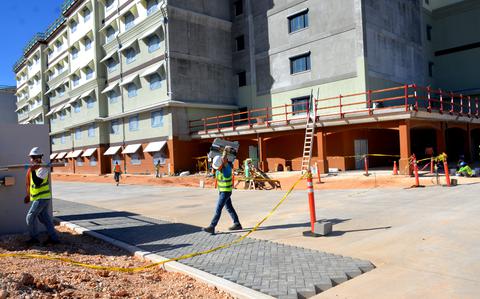U.S. Marines Relocate from Okinawa to Guam

The relocation of from Okinawa to Guam marks a significant shift in military strategy in the Indo-Pacific region. This move is part of a broader initiative aimed at reducing the military presence on Okinawa, where a substantial number of U.S. service members are stationed. The first group of Marines has already begun their transition, with plans for more to follow in the coming years. This article explores the details of the relocation, the ongoing construction of Camp Blaz, and the implications for U.S. military operations in the region.
Initial Troop Movements and Future Plans
The first contingent of Marines, consisting of about 100 logistics support troops from the III Marine Expeditionary Force, has started moving from Okinawa to Guam. According to a joint statement from the Marine Corps and Japan’s Ministry of Defense, these Marines will temporarily stay at Andersen Air Force Base, Naval Base Guam, or off-base accommodations. They will not be housed at Camp Blaz, which is still under construction.
The transfer of these Marines has been in progress for several months. Capt. Brenda McCarthy, a spokeswoman for Marine Corps Headquarters, confirmed that the first group is expected to be fully settled by 2025. This relocation is part of a larger plan that anticipates over 4,000 Marines moving from Okinawa to Guam. This initiative stems from the Defense Policy Review Initiative, a 2012 agreement between the United States and Japan aimed at reducing the military footprint on Okinawa, where nearly 30,000 of the 55,000 U.S. service members in Japan are stationed.
Camp Blaz, the first new Marine Corps installation in 72 years, is designed to accommodate rotational units moving from Okinawa. It is expected that approximately 1,300 Marines will be permanently stationed on Guam, while an additional 3,700 may serve on a rotational basis. This strategic move aims to enhance operational flexibility and readiness in the region.
Cruise ship break down leaves more than 1,800 Taiwanese stranded in Japan –
Ongoing Construction and Infrastructure Development
Camp Blaz is a multibillion-dollar construction project that remains largely unfinished. Officially activated in 2020, the base has been under construction since then. As of now, at least 22 projects have been completed across Guam, primarily at other military installations. An additional 32 projects are expected to be finalized by fiscal year 2025, according to Rachel Landers, a spokeswoman for the Office in Charge of Construction Marine Corps Marianas.
The Japanese government is contributing approximately $3 billion towards the estimated $8.6 billion required for the construction of Camp Blaz and its associated infrastructure. This investment underscores the importance of the U.S.-Japan alliance and the shared commitment to regional security.
The logistics Marines who have recently arrived on Guam are considered to be permanently stationed there. Staff sergeants and higher ranks will reside on Air Force and Navy bases or in the local community. In contrast, the rotational forces will be quartered at Camp Blaz, regardless of their rank. This arrangement allows for a more integrated military presence on the island, enabling Marines, sailors, and civilians to work at various locations, including Camp Blaz, Andersen Air Force Base, and Naval Base Guam.
As the Marine Corps continues to explore options for future force posture in the Indo-Pacific, the relocation to Guam represents a significant step in enhancing operational resilience and supporting allies in the region. The ongoing construction and eventual completion of Camp Blaz will play a crucial role in this strategic shift.
